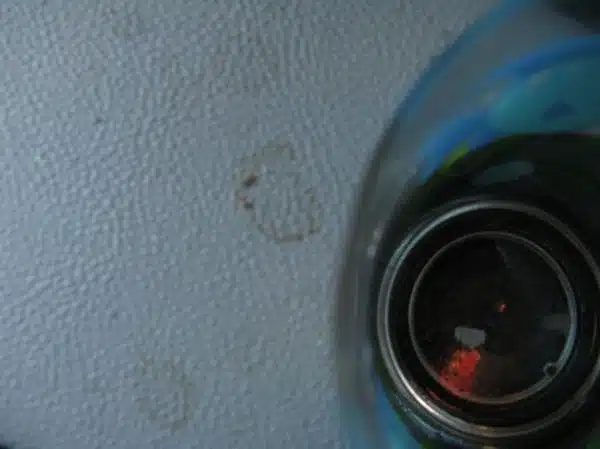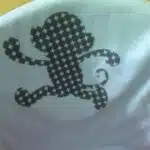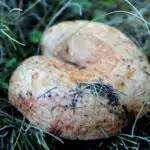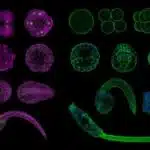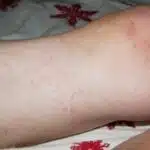Stains are an inevitable part of life, especially when it comes to enjoying soft drinks. While these beverages can be refreshing and delicious, they can also leave behind stubborn stains that seem impossible to remove. Whether it’s spilled soda on a carpet or a stain on clothing, it can be frustrating to see the remnants of your favorite beverage lingering long after it’s gone. However, fear not! As a stain removal expert, I am here to share with you some effective tips and tricks for removing soft drink stains.
Soft drink stains can be particularly challenging due to their composition and color. They often contain sugar or artificial sweeteners, which can make them sticky and more difficult to clean. Additionally, the pigments in soft drinks vary depending on the flavor and brand, making some colors more stubborn than others. But don’t worry – with the right techniques and products, you can successfully remove these pesky stains and restore your belongings back to their original state. So let’s dive in and explore some effective methods for removing soft drink stains once and for all!
Understanding The Composition Of Soft Drink Stains
Soft drink stains are a common sight in households and public places. As a stain removal expert, understanding the composition of soft drinks can help you determine the best way to remove these stubborn stains. Soft drinks are carbonated beverages that contain various ingredients like water, high fructose corn syrup, caffeine, phosphoric acid, citric acid, and artificial flavors. These ingredients can react differently with fabrics and surfaces when spilled.
Understanding chemical reactions is crucial in effectively removing soft drink stains. For example, phosphoric acid found in most colas gives them their tangy taste but can also cause discoloration on fabrics or surfaces. When mixed with water or other cleaning agents containing alkaline components like baking soda or ammonia, it can result in fizzing and create further damage to the stained area. Citric acid found in citrus-flavored sodas has similar effects and should be treated with care.
Common soft drink ingredients have varying degrees of reactivity with different materials. Therefore, before tackling a soft drink stain, it is essential to know what type of fabric or surface you are dealing with to avoid causing any further damage. Assessing the severity of the stain will enable you to choose the appropriate method for removal. In the next section, we will explore how to assess the extent of damage caused by soft drink spills and identify the right cleaning agents for each situation.
Assessing The Severity Of The Stain
- Estimating the size of the stain is essential when attempting to remove a soft drink stain, as it will help determine the quantity of cleaning solution needed.
- To determine the fabric type of the stained item, it is important to consider the material from which the item is made, as this will inform the cleaning method used to remove the stain.
- The color of the fabric is also an important factor in stain removal, as bleaching agents should never be used without first testing their effect on a less visible area.
- Additionally, the age of the stain must be taken into account, as the longer a stain is left, the more difficult it is to remove.
Estimating Size
To accurately assess the severity of a soft drink stain, it is essential to estimate its size. As a stain removal expert, measuring concentration and calculating volume are two critical techniques that can help in this process. These methods allow us to determine the level of saturation on the affected area and provide an estimate for the amount of cleaning solution needed.
Measuring concentration involves determining the amount of soft drink that has been absorbed by the fabric. This is done by assessing the color depth and noting any visible marks left by the spill. Once this information is obtained, we can then proceed to calculate the volume of cleaning solution required to remove the stain successfully. This estimation helps prevent over-saturation that could result in further damage to the fabric.
Calculating volume is essential when removing soft drink stains from larger surfaces such as carpets or upholstery. Experts use a formula based on surface area and absorbency levels to determine how much cleaning solution is needed to treat each specific type of material. By estimating these values accurately, we ensure that every inch of affected fabric is adequately treated, leaving no trace of soft drink behind.
In conclusion, estimating size plays a crucial role in assessing the severity of a soft drink stain. Measuring concentration and calculating volume are two effective techniques used by experts to determine how much cleaning solution is necessary for successful removal without causing further damage or leaving unsightly residue behind.
Determining Fabric Type
Assessing the severity of a stain involves various techniques that help determine the best approach to remove it without causing damage. One critical aspect of this process is determining fabric type, which plays a vital role in choosing the right cleaning solution and technique. As a stain removal expert, it is essential to understand how different materials react to specific solutions, as this can significantly impact the outcome of the cleaning process.
Determining fabric type involves assessing material compatibility and selecting an appropriate cleaning method based on this information. This assessment considers factors such as absorbency, texture, and fiber content, which can all impact how well a particular cleaning solution will work. By taking these elements into account, we can tailor our approach to each unique situation and achieve optimal results.
In conclusion, assessing fabric type is an integral part of evaluating the severity of any stain. Determining material compatibility allows us to select the most effective cleaning method for each surface and ensures that we avoid any damage or discoloration caused by using incompatible solutions. By understanding these principles and techniques, we can provide high-quality stain removal services that leave our clients’ fabrics looking clean and new again.
Pre-Treating The Stain
Soft drink stains are a common problem that can be difficult to remove, especially if not treated immediately. It is important to pre-treat the stain as soon as possible to prevent it from setting into the fabric. Before you start, it is useful to identify the type of soft drink that caused the stain and the fabric it is on.
Types of soft drinks to watch out for include soda, energy drinks, and sports drinks. These beverages contain artificial coloring agents and sugars that can leave stubborn stains on fabrics. Additionally, dark-colored sodas like cola can cause more noticeable stains than lighter-colored ones like lemon-lime soda. When pre-treating a soft drink stain, it is crucial to act fast and follow the appropriate steps based on both the type of beverage and fabric.
Common fabrics prone to soft drink stains include cotton, polyester, and wool blends. These materials absorb liquids quickly and easily but may retain the colorants from soft drinks if not treated properly. When dealing with these types of fabrics, use cold water instead of hot water as heat can set in any remaining stains. Also, avoid using bleach or other harsh chemicals that can damage delicate fabric fibers.
Transition into Blotting: Once you have identified the type of soft drink responsible for staining your fabric and determined what kind of material it is made of, you are ready to proceed with pre-treating the stain. The next step involves blotting away any excess liquid before applying a cleaning solution.
Blotting The Stain
- Soft drink stains can be removed from a variety of fabrics by blotting with soap and water, or the application of club soda.
- Blotting with soap and water requires applying a small amount of soap to the stained area and then gently dabbing and blotting the stain with a cloth dampened with lukewarm water.
- Blotting with club soda involves pouring a small amount of club soda directly onto the stained area, followed by blotting the stain with a clean, dry cloth or paper towel.
- Once the stain has been successfully blotted with either method, the fabric should be laundered in accordance with the care instructions on the garment label.
Blotting With Soap And Water
Blotting with soap and water is a popular method for removing soft drink stains. To start, you will need to wet the stained area with cold water. Using alternative detergents such as dish soap or laundry detergent can also be effective in breaking down the stain. However, it is important to avoid using hot water as this can set the stain further into the fabric.
Next, apply a small amount of soap directly onto the stained area and gently rub it in with your fingers or a clean cloth. Leave the soap on for 5-10 minutes to allow it to penetrate the fibers of the fabric. After this time has passed, blotting techniques should be used to remove any excess moisture and rinse away the soap residue.
To blot effectively, use a clean cloth or paper towel to gently press onto the stained area in an up-and-down motion. Avoid rubbing or scrubbing as this can damage delicate fabrics or push the stain deeper into the material. Repeat this process until no more moisture can be absorbed by the cloth. With these tips in mind, you can successfully remove soft drink stains from your favorite clothes without fuss or frustration!
Blotting With Club Soda
Blotting the stain is an essential step in removing soft drink stains from clothes effectively. While blotting with soap and water is a popular method, there are other alternatives that can be used to achieve a similar result. In this subtopic, we will discuss the benefits of using club soda for blotting and explore other alternatives to traditional blotting techniques.
One of the benefits of using club soda for blotting is its ability to lift stubborn stains quickly. It contains carbon dioxide, which helps to break down the stain particles and loosen them from the fabric fibers. To use club soda for blotting, pour a small amount directly onto the stained area and let it sit for 5-10 minutes before gently dabbing with a clean cloth or paper towel until the stain disappears.
Alternatively, if you don’t have access to club soda, other household items such as vinegar or baking soda can be used in its place. Vinegar works by breaking down the chemical bonds in the stain molecules while baking soda acts as an abrasive agent that gently scrubs away at the stain. These alternatives are effective in lifting soft drink stains but may require more time and effort than using club soda.
In conclusion, understanding different blotting techniques is essential when it comes to removing soft drink stains from clothes successfully. While traditional methods such as soap and water can work well, trying out different alternatives like using club soda or vinegar can provide even better results. By following these tips, your favorite clothes will remain pristine, and you will save yourself from unnecessary frustration!
Using Cold Water To Flush The Stain
As a stain removal expert, I know that removing soft drink stains can be tough. However, using cold water to flush the stain can make all the difference. The benefits of using cold water are numerous, and I recommend this method for effective stain removal.
Firstly, cold water helps to prevent the stain from setting into the fabric. This is because hot water can actually cause the stain to bond with the fibers of the material, leading to a much more stubborn and difficult-to-remove mark. By using cold water instead, you’re giving yourself a better chance of completely removing the stain.
Secondly, flushing with cold water helps to dilute and lift away any remaining sugary residue that may be left behind after blotting up as much of the spill as possible. This can prevent further staining or stickiness from setting in over time which could lead to permanent damage.
To ensure you are effectively flushing out the soft drink stain with cold water, there are some tips you should keep in mind. Firstly, use as much pressure as possible when rinsing to help push out any remaining sugary residue from deep within the fibers of your garment. Secondly, use a clean cloth or paper towel when blotting up excess moisture after rinsing – this will help prevent any further damage or staining from occurring.
Now that you have flushed out as much of the soft drink stain as possible using cold water, it’s time to move on to applying a stain remover. But before we do that, let’s take a closer look at some effective techniques for applying these products without causing further damage or discoloration to your fabrics.
Applying Stain Remover
After flushing the soft drink stain with cold water, it’s time to apply a stain remover. Different types of stain removers are available in the market, each having varying degrees of effectiveness. Some common types include hydrogen peroxide, vinegar, and baking soda. Knowing which one to use depends on the type of fabric you’re dealing with.
Hydrogen peroxide is excellent for removing stains from white fabrics. It is a powerful oxidizing agent that can break down even the most stubborn stains. Vinegar works well on colored fabrics as it is a natural acid that can dissolve alkaline stains like those found in soft drinks. Baking soda, on the other hand, is more effective at lifting stains from carpets and upholstery.
When applying any type of stain remover, it’s essential to follow best practices for maximum effectiveness. Start by testing the solution on an inconspicuous area to check for colorfastness or any adverse reactions. Next, apply the solution directly to the stain and let it sit for 10-15 minutes before blotting it up with a clean cloth or paper towel. Avoid rubbing or scrubbing as this can damage the fabric.
Using these tips will help you effectively remove soft drink stains from your clothing or furniture. However, if you’re dealing with a large or persistent stain, using a carpet cleaner may be necessary for complete removal. In the next section, we’ll discuss how to use a carpet cleaner effectively without damaging your fabric.
Using A Carpet Cleaner
Using a carpet cleaner is like wielding a magical wand that can make stains vanish from your carpet. The effectiveness of a carpet cleaner depends on the type of stain and the quality of the machine. For soft drink stains, it is recommended to use a carpet cleaner with strong suction power to extract the sticky residue from the fibers. A high-quality machine will also have multiple settings to adjust temperature and pressure for optimal cleaning results.
Carpet cleaner effectiveness can vary based on individual factors such as experience, attention to detail, and personal preferences. It is important to follow instructions carefully when using a carpet cleaner to avoid any damage to the carpet fibers or discoloration. In some cases, alternative cleaning methods may be necessary if the stain is particularly stubborn or if you do not have access to a carpet cleaner.
If you do not have access to a carpet cleaner, alternative cleaning methods such as vinegar and baking soda may be effective in removing soft drink stains. These household items are readily available and can be mixed together in equal parts to create a powerful cleaning solution. Simply apply the mixture directly onto the stain and let it sit for 10-15 minutes before rinsing with warm water. While this method may require more elbow grease than using a carpet cleaner, it is still an effective way to remove soft drink stains from your carpets without damaging them.
Transitioning into the subsequent section about trying vinegar and baking soda: One alternative method for removing soft drink stains from carpets involves trying vinegar and baking soda.
Trying Vinegar And Baking Soda
After trying out a carpet cleaner for soft drink stain removal, you may find that the stain is not completely gone. In such cases, you can try using vinegar and baking soda to get rid of the remaining stains. Vinegar is an excellent natural cleaning agent that can dissolve tough stains and remove odors. Baking soda, on the other hand, is an effective abrasive that can help to scrub away dirt and grime.
To use vinegar and baking soda for soft drink stain removal, start by mixing equal parts of white vinegar and water in a spray bottle. Spray the solution directly onto the affected area and let it sit for a few minutes. Next, sprinkle baking soda over the stained area and use a soft-bristled brush or cloth to gently scrub the surface in circular motions. Finally, rinse the area with warm water and blot dry with a clean towel.
While vinegar and baking soda are generally safe for most fabrics and surfaces, it’s always best to test them on an inconspicuous area first before using them on a visible stain. Additionally, keep in mind that some fabrics may be sensitive to acidic solutions like vinegar or abrasive substances like baking soda. If you’re unsure about whether or not a particular fabric or surface can handle these ingredients, it’s best to consult with a professional cleaner or conduct further research online.
There are also several alternative home remedies for removing soft drink stains that you may want to consider if vinegar and baking soda don’t work for you. For example, lemon juice mixed with salt can be used as a natural bleaching agent to remove tough stains from clothing or carpets. Other options include rubbing alcohol or hydrogen peroxide mixed with dish soap for tackling stubborn stains on hard surfaces like countertops or tile floors. With so many effective solutions available, there’s no need to worry about unsightly soft drink stains ruining your clothes or furniture.
Applying Hydrogen Peroxide
To continue removing soft drink stains, let us explore the benefits of using hydrogen peroxide. This common household item has a plethora of uses beyond just disinfecting wounds. Hydrogen peroxide can effectively break down the chemicals in soft drinks that cause stains, making it an ideal solution for stain removal.
One of the benefits of hydrogen peroxide is that it is a natural alternative to harsh chemical cleaners. It can be used on various surfaces without causing damage or discoloration. Additionally, hydrogen peroxide is readily available at most drugstores and supermarkets, making it an affordable and convenient option for stain removal.
To use hydrogen peroxide to remove a soft drink stain, follow these simple steps:
- Blot the stained area with a clean cloth to remove any excess liquid.
- Pour hydrogen peroxide onto the stain and let it sit for 5-10 minutes.
- Blot the area with a clean cloth until the stain has lifted.
- Rinse the area with water and allow it to air dry.
In addition to its effectiveness as a stain remover, hydrogen peroxide has many alternative uses around the home. It can be used as a natural disinfectant, tooth whitener, and even as a hair lightener. With so many versatile applications, hydrogen peroxide is a must-have in any household cleaning arsenal.
As we move forward in our quest for effective stain removal methods, let us explore another option: using rubbing alcohol.
Using Rubbing Alcohol
Rubbing alcohol is a highly effective solution for removing soft drink stains. It works by breaking down the sugars and acids in the stain, making it easier to lift from the fabric. However, if rubbing alcohol is not readily available, there are some alternative options that can be used.
One of the most popular rubbing alcohol alternatives is vinegar. Simply mix one part white vinegar with two parts water and apply it to the stain using a clean cloth or sponge. Let it sit for several minutes before rinsing with cold water and washing as normal. Another effective option is hydrogen peroxide, which can be applied directly to the stain and left for 10-15 minutes before rinsing with cold water.
When dealing with stubborn soft drink stains, it’s important to act quickly and avoid using hot water or heat-based treatments as this can set the stain further into the fabric. Instead, use cold water and blot the affected area gently with a clean cloth or paper towel to absorb as much of the liquid as possible. For particularly tough stains, try using a pre-treatment solution or laundry detergent specifically designed for removing stains.
In summary, rubbing alcohol is an excellent choice for removing soft drink stains but if it’s not available there are other options like vinegar and hydrogen peroxide that can also get the job done. Remember to act quickly when dealing with stubborn stains, avoid heat-based treatments, and use pre-treatment solutions or specialized laundry detergents when necessary. Next up we’ll discuss ammonia as another potential solution for dealing with tough soft drink stains.
Trying Ammonia
Rubbing alcohol can be an effective solution for removing soft drink stains. However, if this method does not work, then you might want to consider using ammonia. Ammonia is a common household cleaner that can help break down the proteins in the stain and make it easier to remove.
One possible risk of using ammonia is that it can be dangerous if not used properly. It is important to follow all precautions when using this method, including wearing gloves and working in a well-ventilated area. Additionally, do not mix ammonia with other household cleaners as this can create toxic fumes.
When using ammonia, it is essential to dilute it with water before applying it to the stain. Mix one tablespoon of ammonia with one cup of water and apply the solution to the affected area. Allow it to sit for a few minutes before blotting with a clean cloth or sponge. Repeat the process until the stain is gone.
If both rubbing alcohol and ammonia fail to remove the stain, you can try alternative methods such as dish soap or vinegar. Each method has its effectiveness and precautions, so it’s crucial to choose carefully based on the type of fabric you’re dealing with. In the next section, we will explore how dish soap can be used as an alternative method for removing soft drink stains from clothing or upholstery effectively.
Using Dish Soap
As a stain removal expert, I recommend using dish soap to remove soft drink stains. Dish soap is an excellent cleaning agent that can effectively break down the sugars and dyes found in soft drinks, making it easier to remove the stain from clothing or upholstery. Additionally, dish soap is readily available and affordable, making it a cost-effective solution for those looking to remove soft drink stains.
Benefits of dish soap for stain removal include its ability to penetrate deep into fabric fibers and lift the stain from the material. It also has a high concentration of surfactants that help break down stubborn stains, including those caused by soft drinks. When using dish soap for stain removal, it is essential to mix it with warm water and apply it directly to the affected area before washing as usual.
For those who prefer alternatives to dish soap for stain removal, there are several options available. One alternative is using vinegar mixed with baking soda to create a paste that can be applied directly to the stain. Another option is using hydrogen peroxide mixed with water and applied directly to the affected area. However, these alternatives may not be as effective as dish soap when removing soft drink stains.
When trying lemon juice as another potential solution for removing soft drink stains, start by squeezing fresh lemon juice onto the stained area and rubbing gently with a clean cloth or brush. Let it sit for 5-10 minutes before rinsing with cold water and washing as usual. This method may not be suitable for all types of materials or colors, so it’s essential to test on an inconspicuous area first before applying it directly to the stained area.
Trying Lemon Juice
Benefits of Using Lemon Juice
Lemon juice is a natural and effective way to remove soft drink stains from fabrics. The acidic properties of lemons break down the chemical compounds present in the stains, making them easy to remove. Additionally, lemon juice has a refreshing scent that can leave your clothes smelling fresh and clean.
Precautions When Using Lemon Juice
While lemon juice is generally safe to use on most fabrics, there are some precautions you should take when using it as a stain remover. First and foremost, always test the lemon juice on a small, inconspicuous area of the fabric before applying it to the stain directly. This will help you avoid any potential damage or discoloration to the fabric. Additionally, be careful not to oversaturate the fabric with lemon juice, as this can lead to further damage.
Incorporating Lemon Juice into Your Stain Removal Routine
To use lemon juice as a soft drink stain remover, start by squeezing fresh lemon juice onto the affected area of the fabric. Allow the lemon juice to sit for 10-15 minutes before rinsing with cool water. For tougher stains, you may need to repeat this process several times before seeing results. Once you have successfully removed the stain, wash the clothing item as usual.
Transition:
Now that we’ve covered how to remove soft drink stains with lemon juice let’s move on to another effective method using salt and club soda.
Using Salt And Club Soda
- Salt can be used to remove soft drink stains from fabrics, as its absorbent nature helps to draw out the liquid from the stain.
- Club soda can also be used to remove soft drink stains, as its carbonation helps to break down the stain and lift it from the fabric.
- For best results, it is recommended to combine salt and club soda with a detergent and cold water to pre-treat the stain before washing it.
- Additionally, when using either salt or club soda to remove soft drink stains, it is important to apply it to the stain as soon as possible to ensure the stain is not set.
Removing Soft Drink Stains With Salt
As a stain removal expert, I understand the frustration of dealing with soft drink stains. Luckily, there are alternative methods to remove these pesky marks using salt and club soda. In this subtopic, we will be discussing how to remove soft drink stains with salt.
To start, you want to blot the excess liquid with a clean cloth or paper towel. Then, sprinkle a generous amount of salt onto the stain and allow it to sit for at least 10 minutes. The salt will absorb the moisture from the stain and loosen it from the fabric. Afterward, rinse the area with cold water and repeat until the stain is gone. It’s important not to rub the area as it can damage the fibers and make the stain worse.
One common mistake people make when removing soft drink stains is using hot water instead of cold. Hot water can set in the stain and make it harder to remove later on. Additionally, if you’re dealing with an old or stubborn stain, try mixing salt with club soda to create a paste-like consistency and apply it directly onto the affected area before washing. By following these tips, you’ll be able to effectively remove soft drink stains using salt and club soda.
Removing Soft Drink Stains With Club Soda
In addition to using salt, club soda is another effective cleaning technique for removing common soft drink stains. As a stain removal expert, I highly recommend the use of club soda to tackle these pesky marks on fabrics. The fizzy carbonation in club soda helps loosen the stain from the fibers and makes it easier to remove.
To use club soda as a cleaning agent for soft drink stains, start by blotting any excess liquid with a clean cloth or paper towel. Then, pour some club soda directly onto the stain and let it sit for at least 10 minutes. Afterward, rinse the area with cold water and repeat until the stain is gone. It’s important not to rub the area as this can damage the fabric.
If you’re dealing with an older or stubborn stain, try mixing salt with club soda to create a paste-like consistency and apply it directly onto the affected area before washing. This combination creates an even more potent cleaning solution that can effectively remove even the toughest of stains. By utilizing these techniques, you can rest assured knowing that you have all the necessary tools to remove soft drink stains from your favorite clothes and fabrics.
Preventing Soft Drink Stains In The Future
Soft drink stains can be frustrating to deal with, especially when they ruin a favorite piece of clothing or furniture. However, there are steps that can be taken to prevent these stains from happening in the future. By following some simple tips and choosing the right cleaning products, you can enjoy your favorite soft drinks without worrying about potential spills and stains.
Tips for spill prevention include being mindful of where your drinks are placed, using coasters or placemats on furniture surfaces, and avoiding overfilling cups or glasses. Additionally, it is important to handle drinks carefully when carrying them around to prevent accidental spills. By taking these precautions, you can significantly reduce the likelihood of dealing with soft drink stains in the future.
Choosing the right cleaning products is also essential for preventing soft drink stains. Look for products that are specifically designed to remove these types of stains and follow the instructions carefully. Avoid using harsh chemicals or abrasive materials that could damage your clothing or furniture. With the right cleaning products and techniques, you can effectively eliminate any soft drink stains that do occur while protecting your belongings from further damage.
Overall, preventing soft drink stains requires a combination of careful handling and proper cleaning techniques. By following these tips and choosing the right products, you can keep your home looking great while enjoying all of your favorite beverages without worry. Remember that prevention is key when it comes to avoiding frustrating messes like soft drink stains!
Conclusion
Soft drink stains can be a real hassle to remove, especially if left untreated. Understanding the composition of soft drink stains is crucial in order to effectively remove them. Assessing the severity of the stain is also important as it will determine the best approach for removing it.
Pre-treating the stain with a suitable cleaning solution and blotting it gently is a good starting point. Using cold water to flush out any remaining residue is also recommended. Dish soap, lemon juice, salt and club soda are effective household remedies that can help remove stubborn soft drink stains.
According to recent research, soft drinks account for nearly 25% of all beverages consumed worldwide. With such high consumption rates, it’s no surprise that spills and stains occur frequently. However, with these simple steps and techniques, you can effectively remove those pesky soft drink stains from your clothing or furniture.
Preventing future stains can also be achieved by being proactive and taking preventative measures such as using coasters, avoiding drinking in areas where spills are likely to occur and cleaning up spills immediately. By following these guidelines and incorporating them into your daily routine, you can ensure that your clothing and furniture remain stain-free in the future.
Image Credits
- “No more soft drink, only stains.” by Aaron/Auryn (featured)

